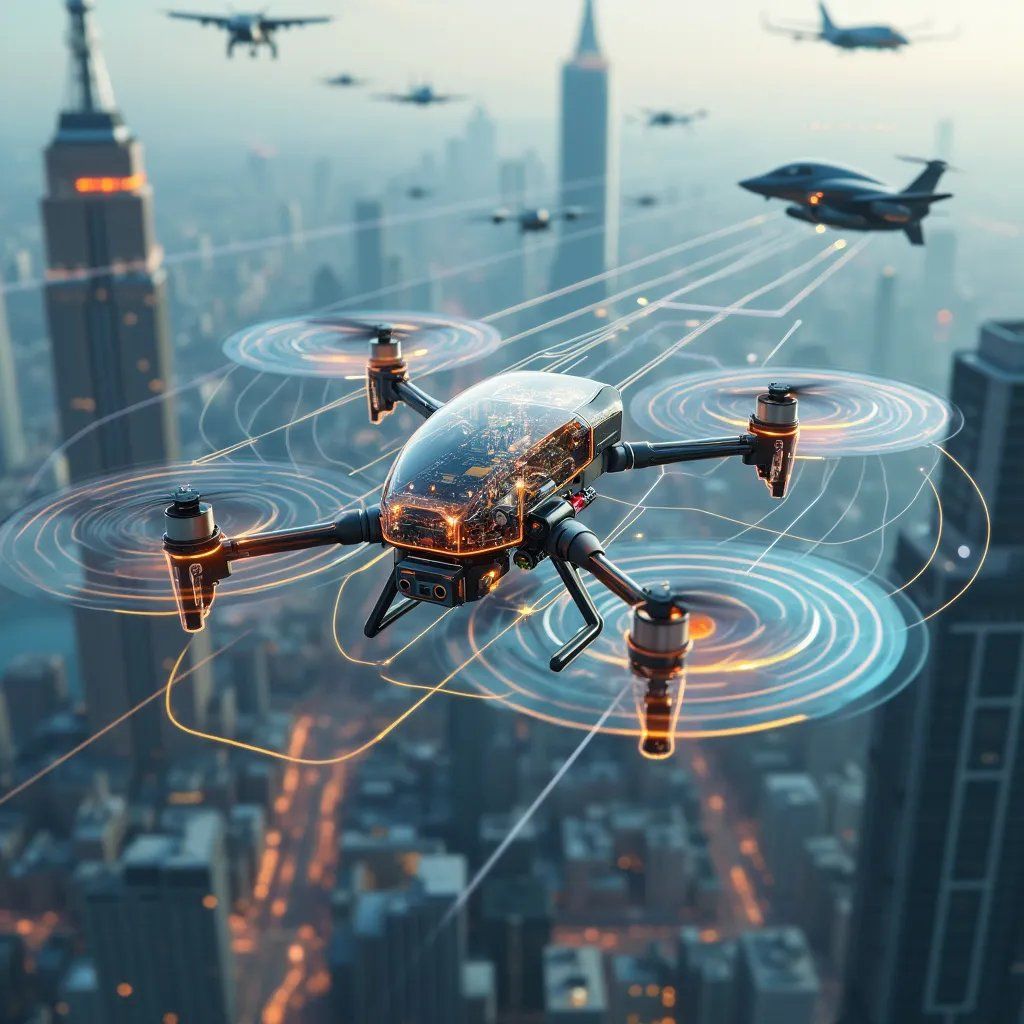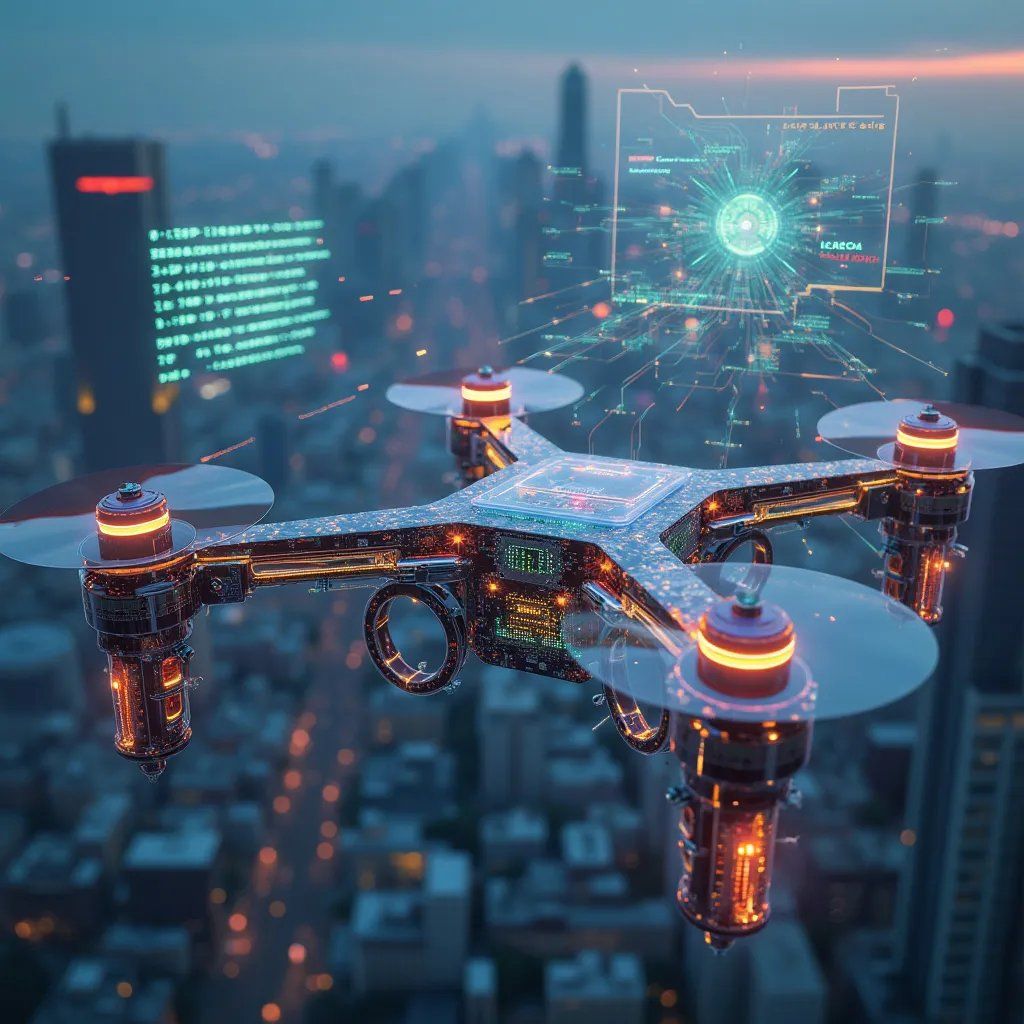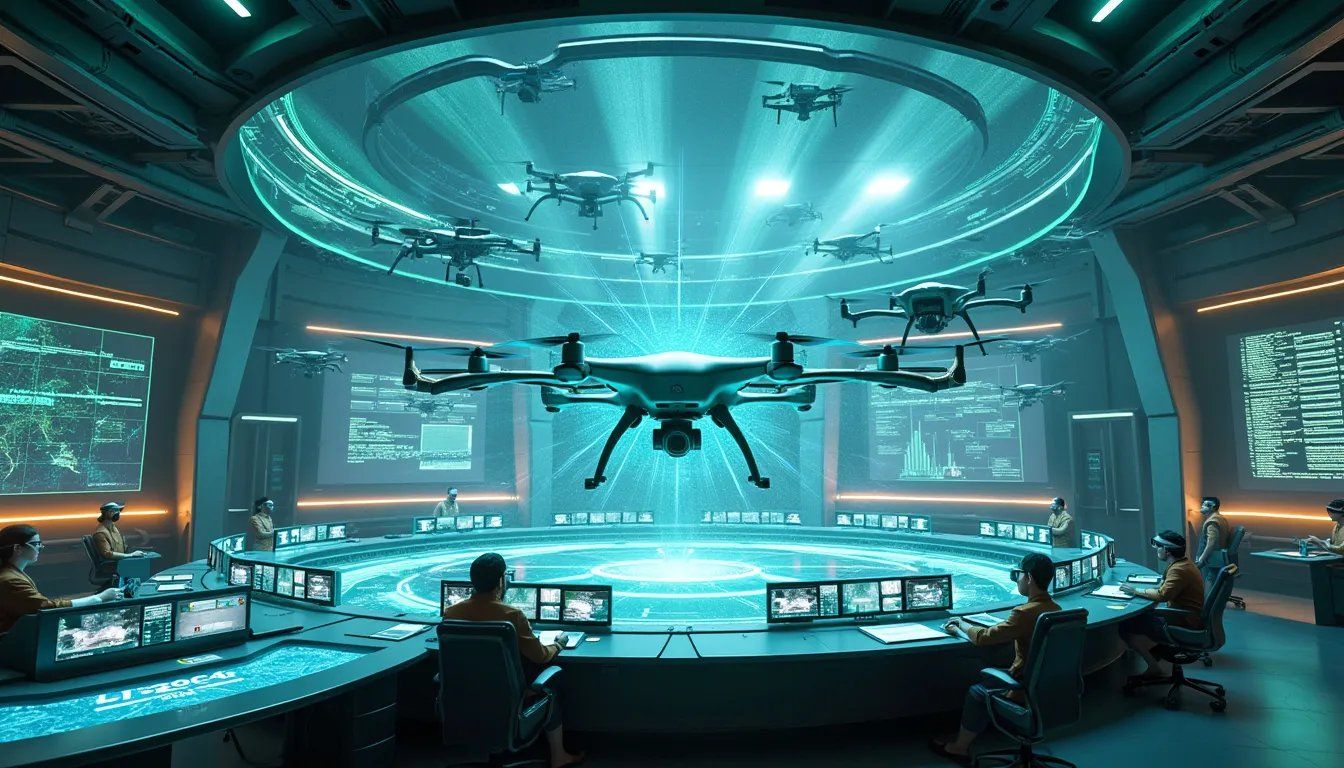The Drone Identification Dilemma
Before we jump into the cloud vs. edge debate, let’s chat about why drone identification is such a big deal. With our skies getting busier by the day, knowing who’s who in the zoo (or should I say, in the air?) is crucial for:
- Safety: Avoiding mid-air oopsies!
- Security: Keeping the bad guys out of restricted airspace.
- Accountability: Making sure drone operators play by the rules.
- Efficiency: Managing air traffic like a boss.
Now, enter the dynamic duo of cloud and edge computing, each vying to be the superhero of drone identification. Let’s break it down!
Cloud Computing: Head in the Clouds
Imagine a world where all the heavy lifting of drone identification happens in massive data centers far, far away. That’s the cloud computing approach in a nutshell.
How It Works
- Drones send identification data to the cloud.
- Powerful servers process the information.
- Results are sent back to the drone or ground control.
The Good Stuff
- Unlimited Power: Cloud servers are like the Hulk of computing. They can handle complex calculations with ease.
- Big Data Analysis: Got tons of drone data? The cloud eats it for breakfast!
- Easy Updates: New identification algorithms? No problem! Just update the cloud servers.
- Centralized Management: Keep all your drone ID info in one place. Easy peasy!
The Not-So-Good Stuff
- Latency: Data has to travel to the cloud and back. In drone time, that can feel like forever!
- Connectivity Issues: No internet? No identification. Houston, we have a problem.
- Privacy Concerns: Sending all that data to the cloud makes some folks nervous.
- Operational Costs: All that cloud power comes with a price tag.
Edge Computing: Feet on the Ground (or in the Air!)
Now, picture this: what if drones could do all that identification stuff right on board? That’s edge computing in action, baby!
How It Works
- Drones process identification data using onboard computers.
- Results are available instantly, right there on the drone.
- Only necessary info is sent to ground control or the cloud.
The Good Stuff
- Speed: Faster than a speeding bullet! (Well, almost.)
- Reliability: No internet? No problem! Edge computing keeps on truckin’.
- Privacy: Keep your data close, and your drone identification closer.
- Reduced Bandwidth: Only send what’s necessary, saving those precious data bytes.
The Not-So-Good Stuff
- Limited Processing Power: Drones can only carry so much computing oomph.
- Hardware Upgrades: New algorithms might mean new hardware. Ouch for the wallet!
- Decentralized Management: Keeping track of all those individual drones can be a headache.
- Limited Data Analysis: Big data insights? That’s not edge computing’s forte.
The Hybrid Approach: Best of Both Worlds?
Now, here’s where it gets interesting. What if we combined cloud and edge computing? It’s like the Avengers of drone identification!
At Decent Cybersecurity, our DroneCrypt IFF system is designed with this hybrid approach in mind. We leverage edge computing for real-time identification and decision-making, while using the cloud for deeper analysis, updates, and global coordination.
How It Works
- Drones perform initial identification and critical decision-making on the edge.
- Non-time-sensitive data is sent to the cloud for deeper analysis.
- Cloud servers push updates and global insights back to the drones.
The Awesome Sauce
- Speed Where It Counts: Critical identification happens in a flash on the drone.
- Depth When You Need It: Complex analysis and big data insights courtesy of the cloud.
- Flexibility: Adapt to different scenarios and requirements on the fly.
- Balanced Resource Use: Optimize processing power and bandwidth usage.
Real-World Scenarios: Putting Theory into Practice
Let’s look at how these approaches play out in the real world:
Scenario 1: Urban Air Mobility
Imagine a city filled with flying taxis and delivery drones. In this bustling aerial environment:
- Edge Computing Shines: For immediate collision avoidance and basic identification.
- Cloud Computing Excels: In managing overall air traffic flow and analyzing patterns.
- Hybrid Approach Wins: Combining real-time decision making with long-term optimization.
Scenario 2: Border Surveillance
For drones patrolling vast stretches of border:
- Edge Computing Rocks: For operating in areas with poor connectivity.
- Cloud Computing Rules: For coordinating multiple drones and analyzing surveillance data.
- Hybrid Approach Dominates: Enabling both autonomous operation and centralized control.
Scenario 3: Drone Racing
In the fast-paced world of drone racing:
- Edge Computing Takes the Lead: For split-second identification and collision avoidance.
- Cloud Computing Supports: Handling registration, race management, and spectator interactions.
- Hybrid Approach Podiums: Ensuring fair play in real-time while managing the overall event.
Challenges and Innovations: Pushing the Boundaries
As we push the envelope of drone identification, we’re running into some exciting challenges:
1. AI and Machine Learning
- Edge Challenge: Implementing complex AI models on resource-constrained drones.
- Cloud Solution: Training sophisticated models that can be distilled for edge deployment.
- Hybrid Innovation: Adaptive AI that shifts processing between edge and cloud based on needs.
2. Security and Privacy
- Edge Worry: Protecting individual drones from physical tampering.
- Cloud Concern: Safeguarding massive amounts of centralized data.
- Hybrid Approach: Distributing security measures across both edge and cloud.
3. Scalability
- Edge Hurdle: Managing updates and consistency across numerous drones.
- Cloud Mountain: Handling exponential growth in drone data.
- Hybrid Solution: Intelligent data routing and processing distribution.
4. Energy Efficiency
- Edge Puzzle: Balancing computing power with battery life.
- Cloud Conundrum: Reducing the carbon footprint of massive data centers.
- Hybrid Strategy: Optimizing workload distribution for maximum energy efficiency.
The Human Touch: It’s Not All About the Tech
As we navigate this cloud-edge maze, let’s not forget the human element:
- User Experience: Drone operators need intuitive interfaces, regardless of where the computing happens.
- Trust: Building confidence in automated identification systems is crucial for adoption.
- Training: Educating operators, regulators, and the public on these technologies is key.
- Ethical Considerations: Balancing security needs with privacy rights is an ongoing challenge.
A Collaborative Future: We’re All in This Together!
The future of drone identification isn’t just about choosing between cloud and edge – it’s about creating a collaborative ecosystem. Here’s how different players can contribute:
- Drone Manufacturers: Designing hardware that’s flexible enough for both edge and cloud processing.
- Software Developers: Creating adaptive algorithms that can seamlessly transition between edge and cloud.
- Cloud Providers: Developing drone-specific services that complement edge capabilities.
- Regulators: Crafting flexible frameworks that accommodate evolving technologies.
- Researchers: Pushing the boundaries of what’s possible in distributed computing for drones.
- Drone Operators: Providing real-world feedback to drive innovation.
At Decent Cybersecurity, we’re excited to be part of this collaborative effort. Our DroneCrypt IFF system is just one piece of the puzzle, and we’re always looking for ways to work with others in the field.
Conclusion: The Sky’s Not the Limit!
As we’ve seen, the choice between cloud-based and edge computing in drone identification isn’t a simple either/or. It’s a spectrum of possibilities, with exciting opportunities for innovation at every point.
Whether we’re talking about lightning-fast edge processing, the boundless power of the cloud, or the best-of-both-worlds hybrid approach, one thing’s clear: the future of drone identification is bright, dynamic, and full of potential.
So, what do you think? Are you Team Cloud, Team Edge, or Team Hybrid? Have you had any experiences with drone identification systems? We’d love to hear your thoughts, ideas, and even your wild predictions for the future!
Remember, in the world of drone tech, the sky’s not the limit – it’s just the beginning. So let’s keep the conversation flying, and together, we’ll shape the future of drone identification!
References
[1] Johnson, M., & Smith, K. (2023). “Adaptive Drone Identification: Balancing Edge and Cloud Computing.” IEEE Internet of Things Journal, 10(6), 5678-5691.
[2] Zhang, L., Wang, Y., & Sun, X. (2022). “Energy-Efficient Algorithms for Drone-Based Edge Computing.” ACM Transactions on Sensor Networks, 18(3), 1-24.
[3] Liu, J., Chen, H., & Yang, L. (2023). “Privacy-Preserving Drone Identification in Cloud Environments.” Journal of Cryptographic Engineering, 13(2), 156-171.
[4] Patel, S., & Kumar, A. (2023). “Hybrid Cloud-Edge Architectures for Real-Time Drone Traffic Management.” Transportation Research Part C: Emerging Technologies, 140, 103666.
[5] European Union Aviation Safety Agency. (2023). “Acceptable Means of Compliance and Guidance Material for UAS Traffic Management.” EASA ED Decision 2023/008/R.







